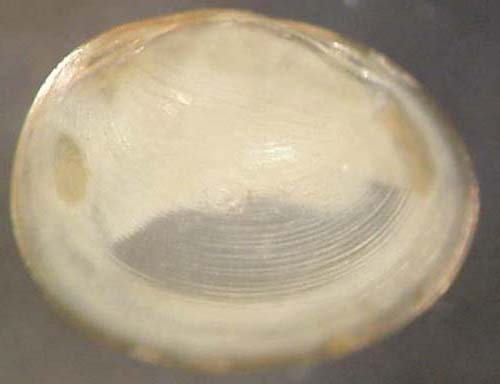
THE XERCES SOCIETY FOR INVERTEBRATE CONSERVATION Aquatic Invertebrates in Pacific Northwest Freshwater Wetlands |
| Identify taxa |
Sphaeriidae |
The fingernail clams are abundant and ubiquitous and can be found in many wetlands and other aquatic habitats. They are often overlooked when scanning a sample because they look like sand or pebbles. They spend most of their time burrowing through mixed sediments of gravels, sand, and/or fine organics, and filtering out organic material as they go. They can be identified by their, small, relatively round, white to tan shells. The Sphaeriidae are sometimes called Pisidiidae, as is a family of tiny beetles. We use the family name Sphaeriidae here, but Pisidiidae is used in many references. Three genera of Sphaeriidae were collected in a study in the Willamette Valley in Oregon; they are described briefly below. |
Size: small to medium Identifying feature(s): small, delicate, round shells without raised growth rings Habitat: sand or gravel of the wetland substrate; also found in moving waters Tolerance: moderate |
| Key to Sphaeriidae | |||
Pisidium (pea clams) |
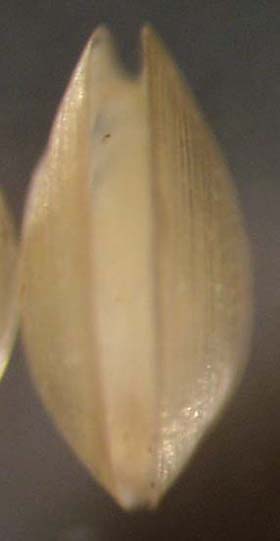  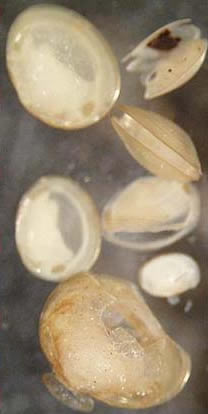 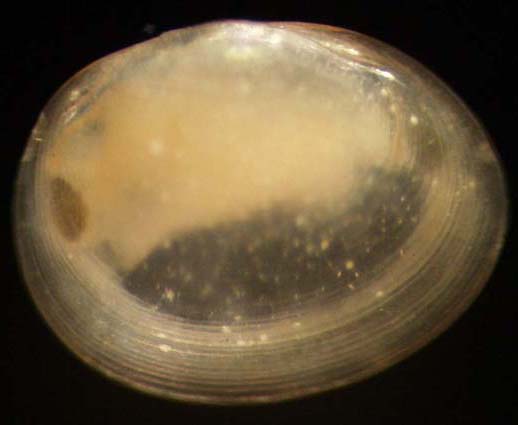 |
||
Musculium (fingernail clams) |
|||
Sphaerium (fingernail clams) |
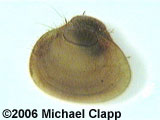 |
||
|
 |
© 2007 Xerces Society
Contact info@xerces.org
